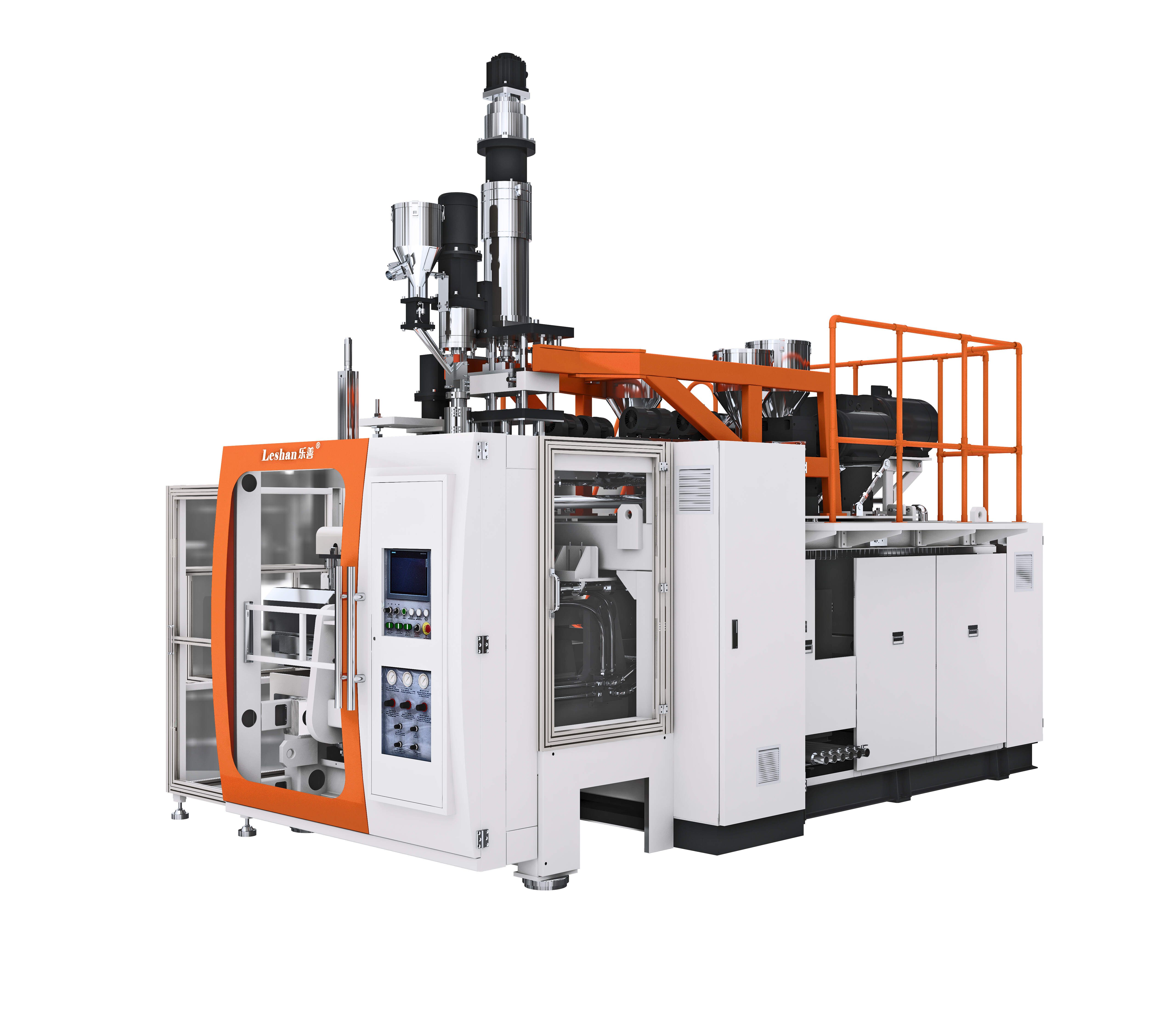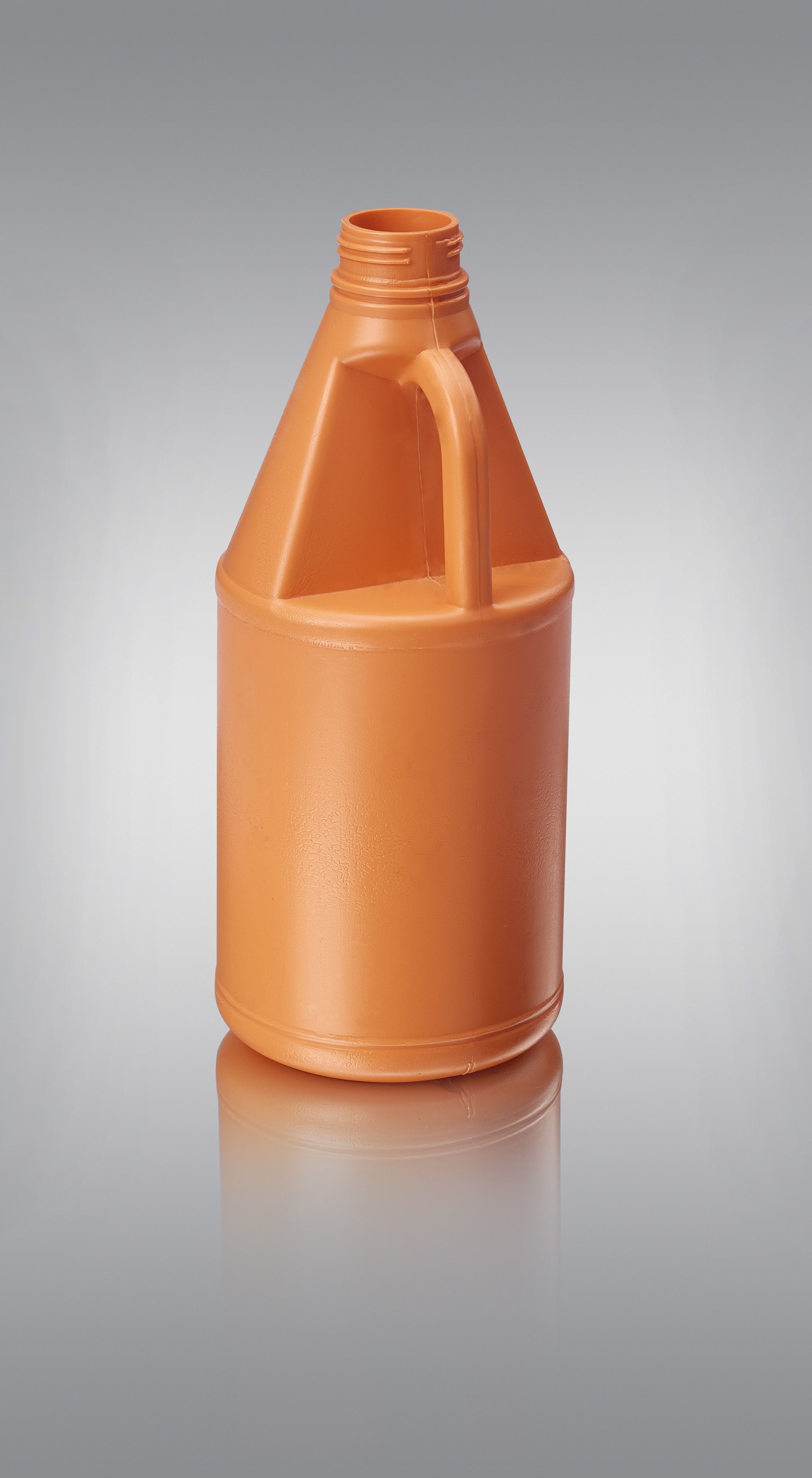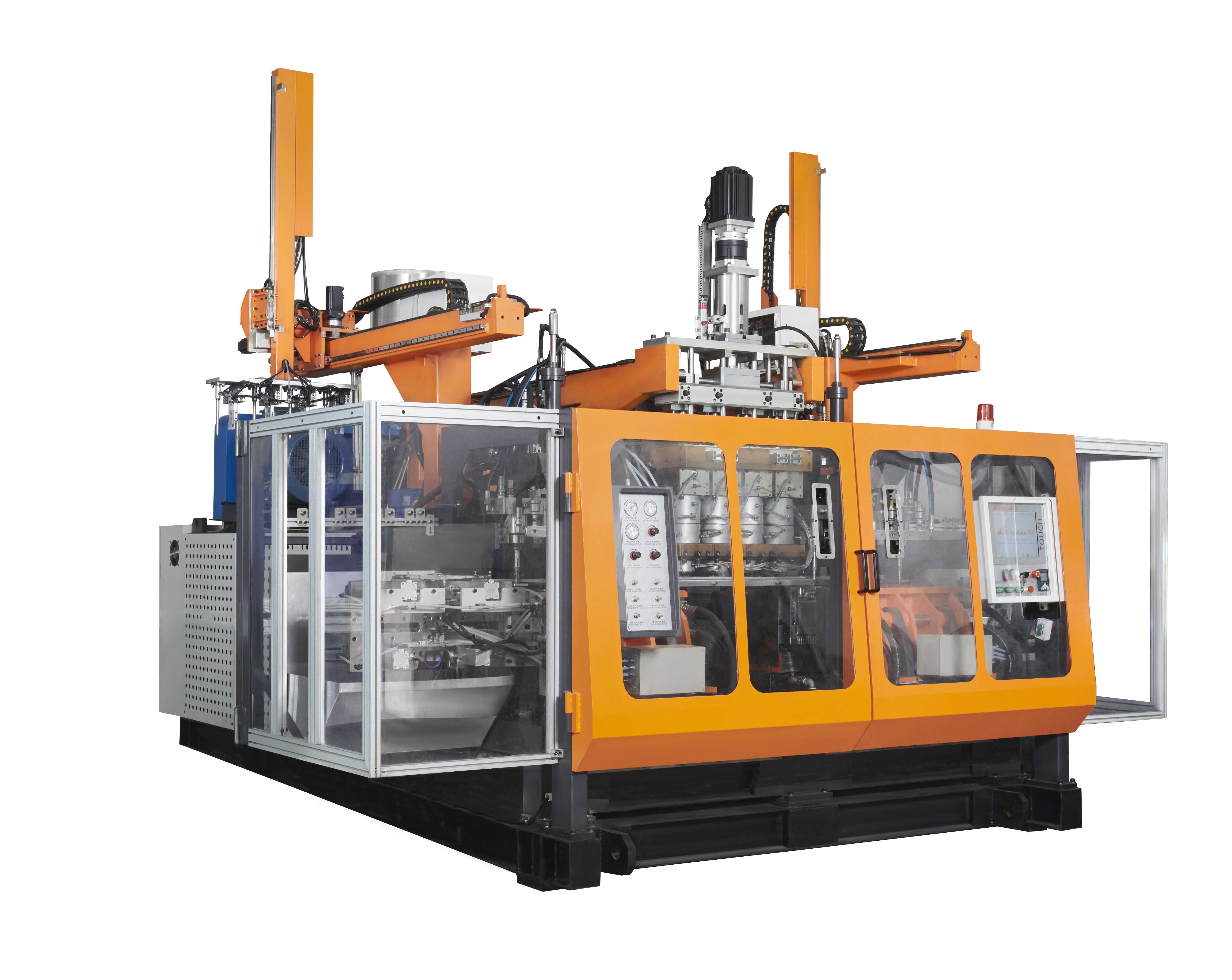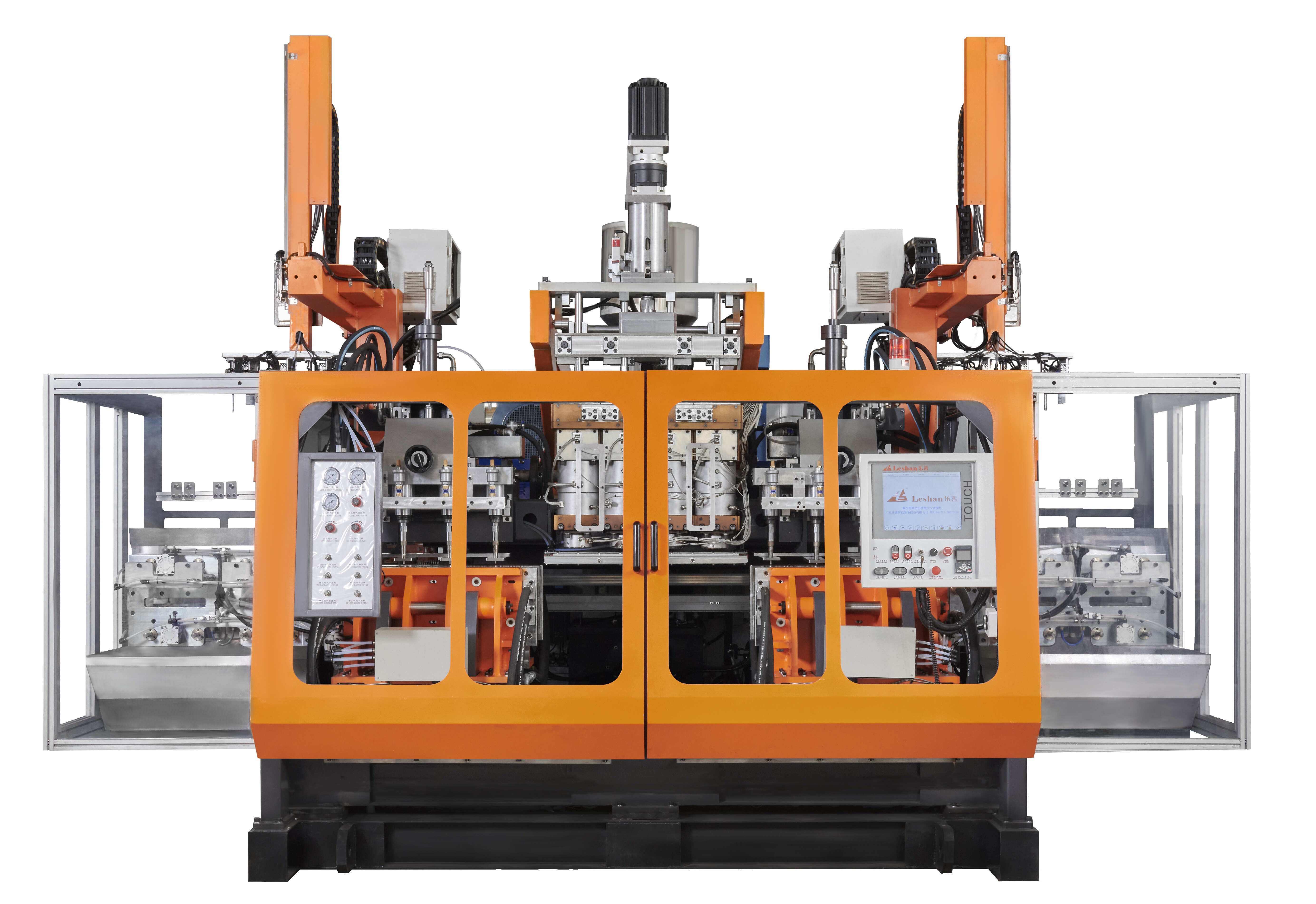
2 liter blow molding machine
2 liter blow molding machine
Leshan Machinery Company was established in 1995 and is located in Foshan, Guangdong. Our business scope includes exporting Hydraulic Blow Molding Machine, All-Electric PET Blow Molding Machine,High-precision Mould,Milk bottle blow molding machine,Extrusion Die Head,athlon series hydraulic machine,Cleaning bottle blow molding machine,Auxiliary machine,Irregular shape product blow molding machine,Daily chemistry bottle blow molding machine,Chemical barrel blow molding machine,Food bottle blow molding machine,multi-layer coextrusion blow molding machine and other equipment. We are also armed with comprehensive strength such as strong R&D power,production marketing,technical support,etc... Through years of creation , Leshan has been transformed the patent technology into application.
We also use International standards and the ISO9001:2012 quality management system in producing. Currently, our company's products are exported to over 50 countries and regions worldwide. Including: Russia, Australia, Poland, Saudi Arabia, Bengal, Vietnam , etc...
| Parameter | Information |
| Product Name | 2 liter blow molding machine |
| Brand Name | Leshan |
| Place of Origin | Foshan,China |
| PLC Brand | Siemens |
| Core Components | Motor,Pressure vessel,Pump,Gear,Bearing...etc |
| Warranty | 1year |
| Plastic Processed | PC,PP,PVC,HDPE,ABS,EVA,Polystyrene...etc |
| Application | Bottle |
| Port | ShunDe/GuangZhou/ShenZhen China |
| MOQ | 1 Set |
| Export Country | Russia, Australia, Poland,Niue,Sri Lanka,India...etc |
| Export region | Europe,Africa,America... |
| Certification | ISO 9001,CE...etc |
| Automatic | Yes |
| Screw L/D Ratio | 24 |
| Packaging Details | Standard exporting machine packing with plastic film |
| Color | Customized |
| Accumulator Capacity(L) | 100 L |
| Service | Field maintenance and repair service... |
| Supply Ability | 500 Set/Sets per Month |
| Lead time (days) | 70 (To be negotiated) |
Please note: The above table data is for reference only. For specific information, please contact us.

2 liter blow molding machine also offer flexibility and scalability. It can adjust the production process and parameters according to production needs to meet different product requirements. At the same time, the blow molding machine also has extension functions. By adding additional devices, it can realize bottle mouth separation, label attachment and other processing to meet the application needs of more fields.

2 liter blow molding machine---FAQs Guide
2.What are the precautions for operating a 2 liter blow molding machine?
3.Besides the blow molding machine, what other services can Leshan provide?
4.Why does the blow molding machine make so much noise when it exhausts?
5.What waste materials will be generated during the production process of 2 liter blow molding machine?
6.What factors will affect the production efficiency of 2 liter blow molding machine?
7.What is the working principle of a blow molding machine?
8.How to adjust the production speed of 2 liter blow molding machine?
9.What is the cost composition of 2 liter blow molding machine?
10.What are the common problems in the production process of 2 liter blow molding machine?
1.How to improve the production capacity and speed of 2 liter blow molding machine?
We pay attention to user experience and product quality, and provide the best product quality and lowest production cost for cooperative customers.
1. Regular Maintenance: Regular maintenance of the blow molding machine is essential to ensure its smooth functioning and prevent breakdowns. This includes cleaning, lubricating, and replacing worn-out parts.
2. Use High-Quality Materials: The quality of the materials used in the blow molding process can greatly affect the production capacity and speed. Using high-quality materials can result in faster production and better quality products.
3. Optimize the Design: The design of the blow molding machine can also impact its production capacity and speed. Optimizing the design to reduce the number of steps and improve the efficiency of the process can increase the production speed.
4. Increase Automation: Automation can greatly improve the production capacity and speed of blow molding machines. Automated processes can reduce the need for manual labor and increase the accuracy and speed of production.
5. Use Advanced Technology: Upgrading to newer and more advanced blow molding technology can significantly improve the production capacity and speed. This includes using computer-controlled systems, advanced sensors, and other technologies that can optimize the production process.
6. Train Operators: Properly trained operators can greatly improve the efficiency and speed of the blow molding process. They should be trained in operating the machine, troubleshooting common issues, and performing routine maintenance.
7. Implement Lean Manufacturing Principles: Implementing lean manufacturing principles can help identify and eliminate waste in the production process, resulting in increased efficiency and speed.
8. Increase the Number of Cavities: Increasing the number of cavities in the blow molding machine can significantly increase the production capacity. This allows for more products to be produced in a single cycle, reducing the overall production time.
9. Optimize Cooling Time: The cooling time of the products can greatly impact the production speed. Optimizing the cooling time by using advanced cooling methods can reduce the overall production time.
10. Monitor and Analyze Production Data: Regularly monitoring and analyzing production data can help identify bottlenecks and areas for improvement. This can help optimize the production process and increase the production capacity and speed.
2.What are the precautions for operating a 2 liter blow molding machine?
We operate our 2 liter blow molding machine business with integrity and honesty.
1. Read the manual: Before operating the blow molding machine, it is important to thoroughly read and understand the manual provided by the manufacturer. This will help you understand the machine's capabilities, limitations, and safety precautions.
2. Wear appropriate protective gear: Always wear appropriate protective gear, such as safety glasses, gloves, and earplugs, when operating the blow molding machine. This will protect you from any potential hazards.
3. Keep the work area clean: Make sure the work area is clean and free of any debris or obstructions. This will prevent accidents and ensure smooth operation of the machine.
4. Check the machine before use: Before starting the machine, check for any loose or damaged parts. Make sure all the safety guards are in place and functioning properly.
5. Use the correct materials: Use only the materials recommended by the manufacturer for the blow molding machine. Using the wrong materials can damage the machine and pose a safety risk.
6. Follow proper loading procedures: When loading materials into the machine, make sure to follow the proper procedures outlined in the manual. This will ensure the materials are loaded correctly and prevent any accidents.
7. Do not touch moving parts: Never touch any moving parts of the machine while it is in operation. This includes the mold, extruder, and other moving components.
8. Keep hands and clothing away from the machine: Keep your hands and clothing away from the machine while it is in operation. Loose clothing or jewelry can get caught in the machine and cause serious injuries.
9. Do not leave the machine unattended: Always stay with the machine while it is in operation. If you need to leave the machine for any reason, make sure to turn it off and wait for it to come to a complete stop before leaving.
10. Shut down properly: When finished using the machine, shut it down properly following the manufacturer's instructions. This will help prevent any accidents and prolong the life of the machine.
3.Besides the blow molding machine, what other services can Leshan provide?
Also provide close mold, auxiliary system, key engineering services.

4.Why does the blow molding machine make so much noise when it exhausts?
The exhaust valve is blocked or the exhaust valve and exhaust pipe are too small.
5.What waste materials will be generated during the production process of 2 liter blow molding machine?
Our company has many years of 2 liter blow molding machine experience and expertise.
1. Plastic waste: Blow molding machines use plastic materials such as polyethylene (PE), polypropylene (PP), and polyethylene terephthalate (PET) to produce plastic products. These materials are often left as waste after the production process.
2. Scrap plastic: During the production process, there may be excess or defective plastic parts that are not suitable for use. These scraps are considered waste and need to be properly disposed of.
3. Residual materials: Some materials, such as colorants and additives, may be left over after the production process. These materials may also be considered waste and need to be disposed of properly.
4. Packaging waste: Blow molding machines often require packaging materials such as cardboard boxes, plastic bags, and bubble wrap for shipping and storage. These materials can generate waste during the production process.
5. Cleaning waste: Blow molding machines need to be cleaned regularly to maintain their efficiency. This process can generate waste such as cleaning agents, rags, and other materials.
6. Energy waste: The production process of blow molding machines requires energy, which can result in waste in the form of emissions and by-products.
7. Water waste: Some blow molding machines use water for cooling or lubrication purposes. This water may become contaminated during the production process and need to be properly treated before disposal.
8. Metal waste: Some blow molding machines may use metal components, such as molds and machine parts, which can generate metal waste during the production process.
9. Hazardous waste: Some materials used in blow molding machines, such as solvents and chemicals, may be hazardous and require special handling and disposal methods.
10. Electronic waste: Blow molding machines may also contain electronic components that can become obsolete or damaged during the production process, resulting in electronic waste.
6.What factors will affect the production efficiency of 2 liter blow molding machine?
We have a professional team that is committed to the innovation and development of 2 liter blow molding machine.
1. Machine Design and Technology: The design and technology of the blow molding machine play a crucial role in its production efficiency. A well-designed machine with advanced technology can produce more products in less time.
2. Type of Material: The type of material used for blow molding can significantly affect the production efficiency. Some materials, such as HDPE, are easier to process and can result in higher production rates compared to others.
3. Mold Design and Quality: The design and quality of the mold used in the blow molding process can also impact production efficiency. A well-designed and high-quality mold can produce more consistent and precise products, resulting in higher production rates.
4. Machine Maintenance: Regular maintenance of the blow molding machine is essential to ensure its optimal performance. Neglecting maintenance can lead to breakdowns and downtime, reducing production efficiency.
5. Operator Skill and Training: The skill and training of the machine operator can also affect production efficiency. A trained and experienced operator can operate the machine more efficiently, resulting in higher production rates.
6. Production Volume and Batch Size: The production volume and batch size can also impact the production efficiency of blow molding machines. Larger production volumes and batch sizes can result in higher efficiency due to reduced setup and changeover times.
7. Ambient Conditions: The ambient conditions, such as temperature and humidity, can affect the production efficiency of blow molding machines. Extreme temperatures or high humidity can affect the quality of the products and slow down the production process.
8. Automation and Control Systems: The level of automation and control systems used in the blow molding machine can also impact production efficiency. Advanced automation and control systems can improve process control and reduce human error, resulting in higher production rates.
9. Energy Efficiency: The energy efficiency of the blow molding machine can also affect its production efficiency. Energy-efficient machines can reduce operating costs and increase production rates.
10. Quality Control: The implementation of a robust quality control system can also improve production efficiency. By identifying and addressing defects early on, the machine can produce more high-quality products in less time.

7.What is the working principle of a blow molding machine?
We focus on innovation and continuous improvement to maintain a competitive advantage.
The working principle of a blow molding machine involves the use of compressed air to inflate a molten plastic tube or parison inside a mold cavity. This creates a hollow shape that is then cooled and solidified to form a plastic product.
The process begins with the plastic material, usually in the form of pellets, being fed into a hopper and then melted in an extruder. The molten plastic is then forced into a long tube or parison, which is then clamped between two halves of a mold.
Next, a nozzle is inserted into the parison and compressed air is blown into it, causing the plastic to expand and take the shape of the mold cavity. The mold is cooled to solidify the plastic, and then the mold halves are separated, and the finished product is ejected.
The blow molding process can be either extrusion blow molding or injection blow molding, depending on the type of machine used. In extrusion blow molding, the parison is formed by extruding the molten plastic through a die, while in injection blow molding, the parison is formed by injecting the molten plastic into a mold cavity.
The working principle of a blow molding machine is based on the principles of thermodynamics and fluid mechanics, where the expansion of compressed air inside the parison creates pressure that forces the plastic to take the shape of the mold. This process allows for the production of hollow plastic products with complex shapes and sizes.
8.How to adjust the production speed of 2 liter blow molding machine?
Our 2 liter blow molding machine products undergo strict quality control to ensure customer satisfaction.
1. Check the machine settings: The first step in adjusting the production speed of a blow molding machine is to check the machine settings. Make sure that the machine is set to the desired production speed and that all the necessary adjustments have been made.
2. Adjust the air pressure: The air pressure is a crucial factor in the production speed of a blow molding machine. Increasing the air pressure can help to speed up the production process, while decreasing it can slow it down. Adjust the air pressure according to the desired production speed.
3. Change the mold: The size and shape of the mold can also affect the production speed. A larger or more complex mold will take longer to produce, while a smaller and simpler mold will speed up the production process. Consider changing the mold to one that is more suitable for the desired production speed.
4. Increase or decrease the parison size: The parison is the hollow tube of plastic that is formed in the machine and then blown into the mold. Adjusting the size of the parison can also affect the production speed. Increasing the parison size will result in a larger product and slower production, while decreasing the parison size will result in a smaller product and faster production.
5. Adjust the cooling time: The cooling time is the amount of time the product spends in the mold to solidify. Increasing the cooling time will slow down the production speed, while decreasing it will speed it up. Adjust the cooling time according to the desired production speed.
6. Check for any mechanical issues: If the production speed is not adjusting as expected, it is important to check for any mechanical issues with the machine. Make sure that all the components are functioning properly and that there are no obstructions or malfunctions that could be slowing down the production speed.
7. Test and adjust: Once all the necessary adjustments have been made, run a test production to see if the desired speed has been achieved. If not, make further adjustments until the desired production speed is reached.
It is important to note that adjusting the production speed of a blow molding machine may require some trial and error. It is recommended to make small adjustments at a time and test the results before making further adjustments.
9.What is the cost composition of 2 liter blow molding machine?
We focus on providing high 2 liter blow molding machine quality products and services.
The cost composition of blow molding machines can vary depending on the type and size of the machine, as well as the manufacturer and country of origin. However, the general cost composition can be broken down into the following components:
1. Machine base: This includes the main frame, base plate, and other structural components of the machine. It typically accounts for 20-30% of the total cost.
2. Extruder: The extruder is the heart of the blow molding machine and is responsible for melting and shaping the plastic material. It can account for 30-40% of the total cost.
3. Molds: Molds are used to shape the plastic material into the desired product. The cost of molds can vary greatly depending on the complexity and size of the product being produced. It can account for 20-30% of the total cost.
4. Control system: The control system includes the electrical and electronic components that control the operation of the machine. It can account for 10-15% of the total cost.
5. Hydraulic system: The hydraulic system is responsible for providing the necessary pressure and power to operate the machine. It can account for 5-10% of the total cost.
6. Other components: Other components such as motors, pumps, valves, and sensors can also contribute to the overall cost of the machine.
In addition to these components, the cost of blow molding machines may also include expenses such as labor, transportation, and installation. It is important to note that the cost composition may vary depending on the specific features and capabilities of the machine.

10.What are the common problems in the production process of 2 liter blow molding machine?
As one of the 2 liter blow molding machine market leaders, we are known for innovation and reliability.
1. Inconsistent Wall Thickness: This is a common problem in blow molding machines where the thickness of the plastic material is not uniform throughout the product. This can lead to weak spots in the product and affect its overall strength and durability.
2. Flashing: Flashing occurs when excess plastic material leaks out of the mold during the production process. This can result in a rough or uneven surface on the final product, affecting its appearance and functionality.
3. Warping: Warping is a common problem in blow molding machines where the product becomes distorted or deformed during the cooling process. This can be caused by uneven cooling or improper mold design.
4. Air Traps: Air traps occur when air gets trapped inside the mold during the production process. This can result in air bubbles or voids in the final product, affecting its strength and appearance.
5. Poor Surface Finish: Poor surface finish can be caused by a variety of factors, including improper mold design, poor quality plastic material, or inadequate cooling. This can result in a rough or uneven surface on the final product.
6. Leaks: Leaks can occur in blow molding machines due to worn or damaged seals, improper alignment of the mold, or inadequate clamping force. This can result in product defects and production downtime.
7. Contamination: Contamination can occur in the production process when foreign particles or impurities get mixed in with the plastic material. This can result in defects in the final product and affect its quality and functionality.
8. Machine Malfunctions: Like any other machinery, blow molding machines can experience malfunctions such as electrical issues, mechanical failures, or software glitches. These can result in production delays and affect the overall efficiency of the production process.
Tags: extrusion blow molded parison,accumulator head extrusion blow molder,hdpe extrusion blowing machine
